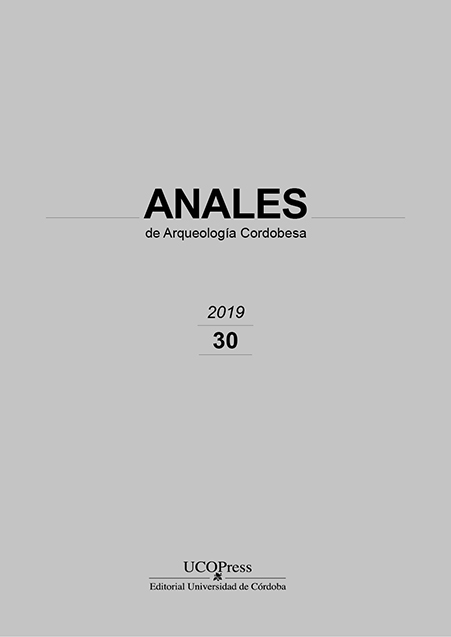Iunxisse etiam camelos quaternos ad currus in circo. The «africanization» of a spectacle on an original clay medallion from Hadrumetum (Sousse, Tunisia)
DOI:
https://doi.org/10.21071/aac.v30i.12442Keywords:
Clay medaillon, Hadrumetum, chariot race, dromedaries, circus, Teurnia.Abstract
A clay medallion found in Hadrumetum (currently Sousse, Tunisia) at the end of the nineteenth century has been studied with the double point of view of its typology and decoration, which is characterized by an original race in the circus with chariots pulled by dromedaries. The resulting excursus moved from Africa to the Danubian provinces, with interesting passages in Gaul and Sardinia, to come up with a proposal both for the identification of this object’s category and for the interpretation of our medaillon as well as of a similar one coming from Teurnia, in Noricum. Using in parallel the proof offered by both these medaillons, it was finally possible to hypothesize which were the venues seats for the development of the performances shown therein.Downloads
Download data is not yet available.
Downloads
Published
2019-12-15
How to Cite
TEATINI, A. (2019). Iunxisse etiam camelos quaternos ad currus in circo. The «africanization» of a
spectacle on an original clay medallion from Hadrumetum (Sousse, Tunisia). Anales De Arquelogía Cordobesa, 30, 281–294. https://doi.org/10.21071/aac.v30i.12442
Issue
Section
Artículos
License
Aquellos autores/as que tengan publicaciones con esta revista, aceptan los términos siguientes:- Los autores/as conservarán sus derechos de autor y garantizarán a la revista el derecho de primera publicación de su obra, el cuál estará simultáneamente sujeto a la Licencia de reconocimiento de Creative Commons que permite a terceros compartir la obra siempre que se indique su autor y su primera publicación esta revista.
- Los autores/as podrán adoptar otros acuerdos de licencia no exclusiva de distribución de la versión de la obra publicada (p. ej.: depositarla en un archivo telemático institucional o publicarla en un volumen monográfico) siempre que se indique la publicación inicial en esta revista.
- Se permite y recomienda a los autores/as difundir su obra a través de Internet (p. ej.: en archivos telemáticos institucionales o en su página web) antes y durante el proceso de envío, lo cual puede producir intercambios interesantes y aumentar las citas de la obra publicada. (Véase El efecto del acceso abierto).


